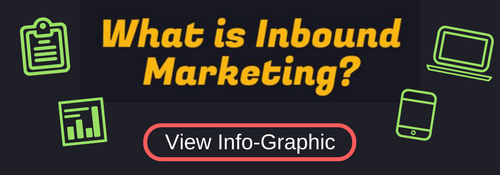Today’s market and business landscape is more diverse, more competitive, and more complex than ever. As a result, digital marketing campaigns must create an integrated approach that allows brands to reach their customers and engage their prospects, leads, and customers across a variety of channels and platforms. While a cohesive approach is a must when it comes to winning over your audience, it is important to understand the differences between key players in the game.
Inbound, content and social media marketing all fall under the umbrella of digital marketing (simply, any marketing efforts that live online). What distinctions should you be aware of while planning a strategy that will work for your brand, goals, budget, and, above all, audience?
INBOUND VS. CONTENT MARKETING
First, let’s get a big one out of the way so we can get down to specifics when it comes to content and social media. Many people are confused (quite justifiably) by inbound vs. content marketing.
INBOUND REQUIRES CONTENT…CONTENT DOESN’T REQUIRE INBOUND
When we take a look at the Inbound Methodology, we see that content is extremely important to an inbound strategy. It’s what keeps the conversation going with your site’s visitors and gives them the value they’re looking for. Whether it be a blog post, a video, or an ebook, your content’s purpose in an inbound marketing strategy is to extend a helping hand to users and qualify their interest in purchasing your product or service.
In other words, your content is the medium by which strangers become leads and customers.
Content Marketing, on the other hand, is using content to inform users about a product or service instead of traditional ads. Consumers typically engage with the content in a positive way, but it lacks the lead generation aspect that inbound provides.
INBOUND MARKETING MAKES CONTENT PERSONAL
I’m sure you’ve seen it plastered all over the internet by now; content is king. Well, if the content is king, then context is God. Content marketing effectively informs people about whatever they’re reading or viewing, but what next?
When we include context to content, it boosts engagement rates and makes the user feel important since you’ve produced content that actually means something to them.
INBOUND INTEGRATION ELATION
The best thing about inbound marketing is the multi-channel integration it delivers. This goes alongside context, but inbound marketing focuses on winning the attention of users wherever they’re spending their time online. Inbound is there whether they’re scrolling their Facebook newsfeeds, checking their email, or jumping from blog to blog.
Content marketing is just that…content. It doesn’t focus on walking users through the buying journey towards a decision. This is why lead generation and inbound marketing go hand in hand.
INBOUND FOCUSES ON BUSINESS GROWTH

Content focuses on informing. This is great, but once users engage with content…what next? Inbound has an answer for that. Including calls-to-action throughout your website and content will provide users with a clearly defined next step, further bringing them closer to a purchasing decision.
The calls-to-action will then take them to a landing page with another piece of content, but this time it’s gated. This means the user must fill out a form with some basic information (i.e. name and email address) to view the content.
If they’re really interested and want the content, it will be a no-brainer for them as they see the value your content will provide. Teasing some information on the landing page and transitioning into the content offer is a great way to increase leads with inbound marketing.
SOCIAL MEDIA MARKETING VS. CONTENT MARKETING
Now we have a foundation. Now we know that our content is invaluable in educating, informing, and perhaps entertaining our audience – and with context, we have the opportunity to boost engagement rates and move them along the sales funnel.
That said, social media and other content assets provide us with avenues to do that. It’s not really a case of “social media marketing vs. content marketing.” Think about it like this: content is a tactic, while social media is a channel.
Social media has made it easier for brands to target their prospective audiences with a great degree of precision and to “speak” directly to them with customized communications. It also provides an exceptional opportunity to listen in on the conversations, gather insights, and start guiding the narrative around your brand.
Content marketing, as mentioned, allows brands to add value to customers’ lives by creating and distributing relevant, informative pieces, from blog posts to videos to podcasts. This is a tactic through which they can generate interest in their products/services and engage prospects, leads, and customers throughout all stages of their journey.
Content and social media strategies do not have to live in isolation – nor should they. Siloing these efforts is one of the best ways to sabotage your efforts! In addition to utilizing social media platforms to engage in conversation, gather insights, and reach new prospects, you can also use them to promote your content offerings. Direct people to your website to download a new ebook or look at the latest blog post; post a quick video with a link back to your site for the full experience; ask followers to share pictures of themselves with various hashtags that lead back to other campaign landing pages or assets.
RESULTS VS. STAGNATION
It’s not social media marketing vs. content marketing. It’s not inbound vs. content marketing. Rather the question is: How do we use these techniques, tactics, channels, and strategies to reach our audience, make an impact, and achieve our goals?
Now that we’re asking the right question, we can get started on the answer. Contact THAT Agency to learn more about our comprehensive solutions.





